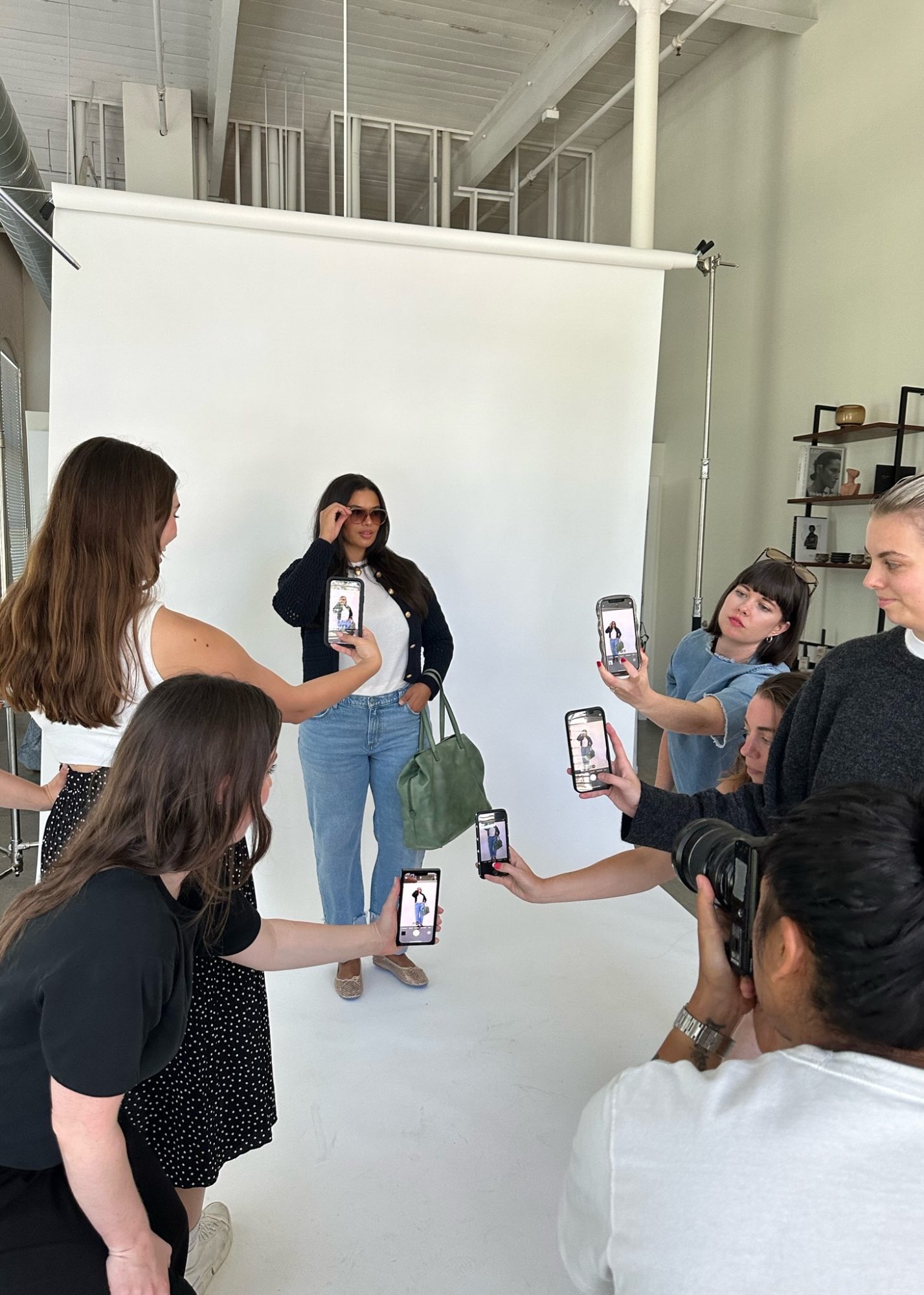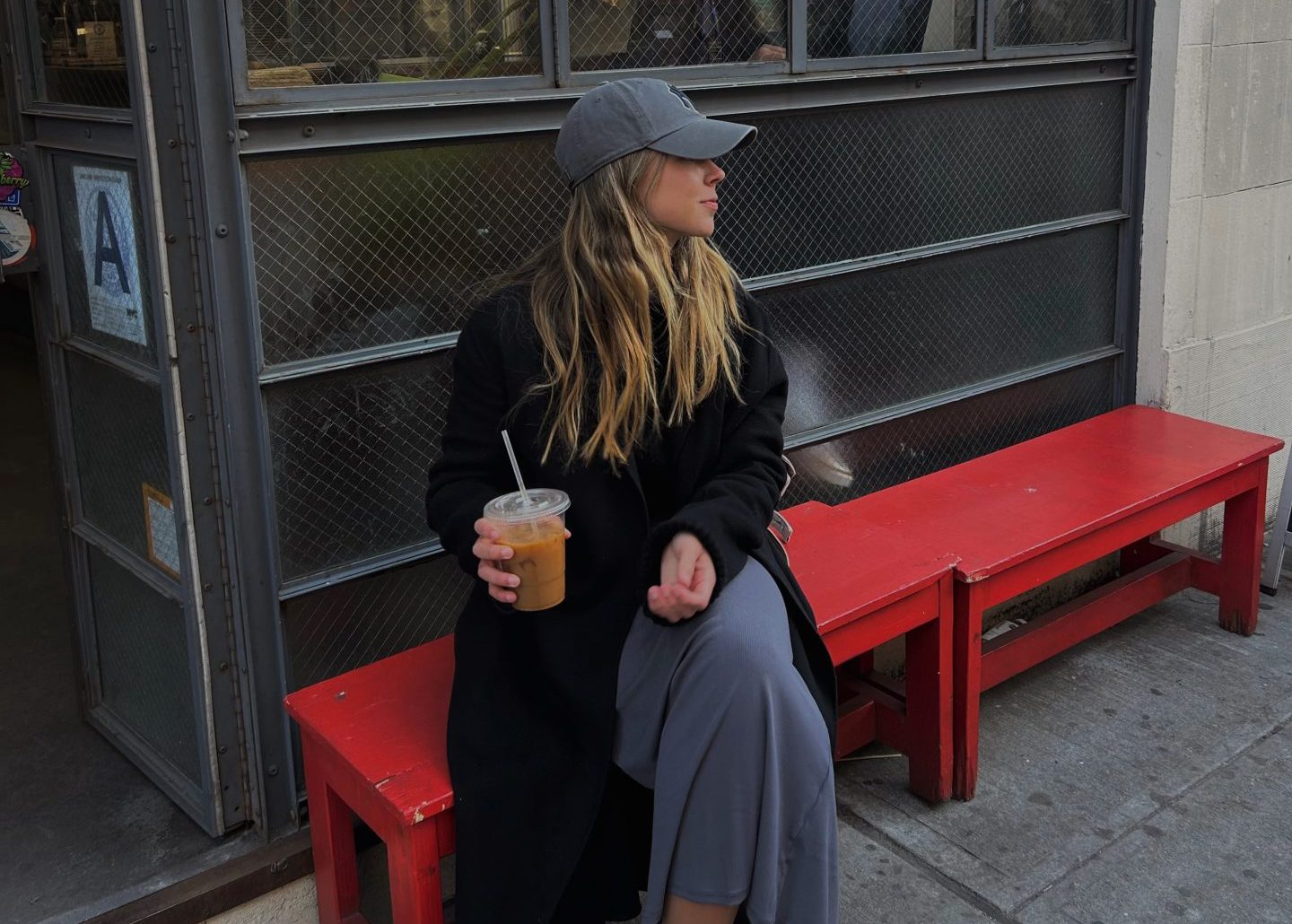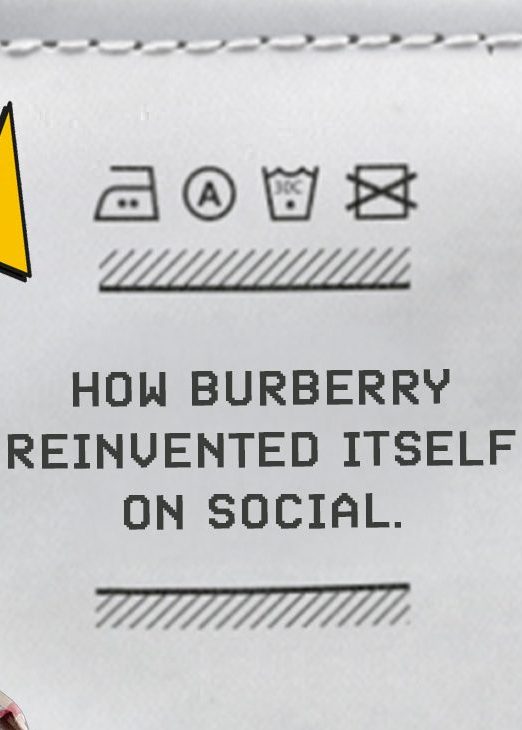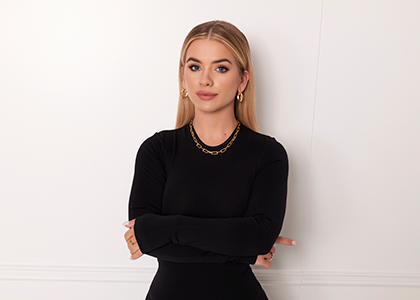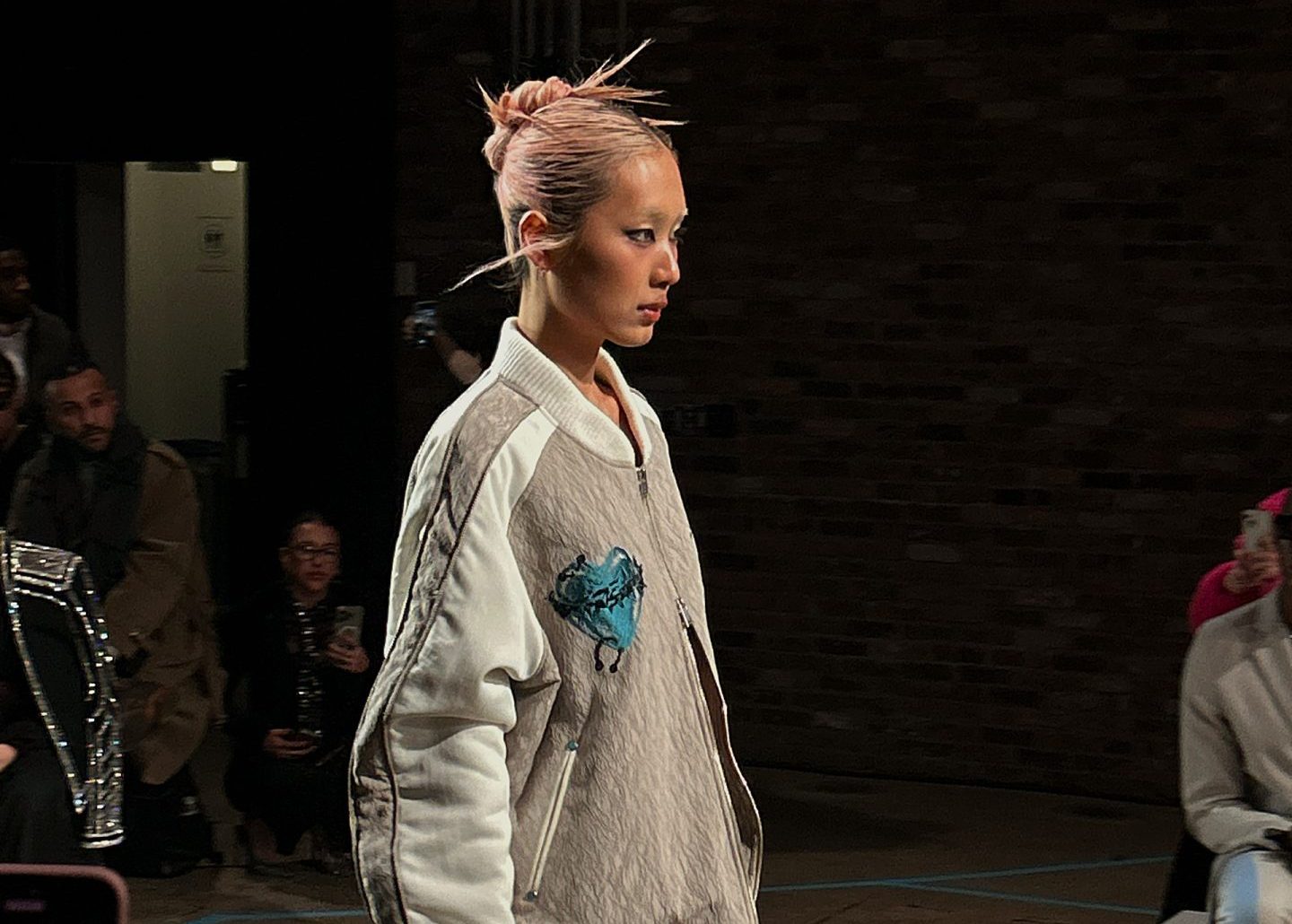June 24, 2022
The Future Of Fashion In A Social-First Age

Fashion is inescapable, acting as a form of self-expression, no consumer can deny its influence and importance in our daily lives. For this very fact, the industry has stood the test of time, being resilient to cultural, technological and environmental shifts. Indeed, by 2026 it is predicted that the global apparel market will reach 2 trillion dollars, with the U.S and China driving the highest proportion of revenue globally.
However, an undeniable shift is upon us all. Technology is rapidly developing, which will see the fantasy depicted in our favourite Sci-Fi movies soon take hold of our realities! Fashion, like the beauty industry, broadly falls into the category of the innovator, being the first to embrace new technological advances and react to consumer habits.
For fashion brands to survive among their competitors, they need to constantly discover new avenues to capture the attention of consumers. Ensuring brands remain front of mind of new and prospective customers.
Contents
- The decline of fast fashion and the rise of fashion rental and more eco-friendly business models ->
- The rise of the TikTok creator and luxury fashion betting big on digital creators ->
- The future of Live commerce ->
- How virtual fashion will force product diversification in the industry ->
- Why fashion should not ignore the metaverse ->
- Predictions for the future of the fashion industry and how brands market fashion products ->
What Factors Are Transforming The Fashion Industry?
Fashion is quick to adapt to new trends, much like beauty, but the following factors are taking the industry into its next digital chapter.
Rise Of The Conscious Consumer
Fast fashion has long reigned superior due to affordable products and the rapid turnaround of trends driven by the upper echelon of the fashion industry. In fact, the fast fashion brand Shein is now valued at $100 billion as reported by Bloomberg, after seeking to raise $1 billion in funding. However, fast fashion isn’t sustainable on many levels. The workers producing garments are often paid shockingly low wages in poor conditions, smaller designers typically report larger brands ripping off designs and the entire business model of a fast fashion brand perpetuates mass consumption. All of which lead to textiles filling up landfills around the world. The E.U reported that every year 4.3 million tonnes of textiles from EU consumers are dumped into landfills, equivalent to 60 truckloads of clothes being burned or buried every minute!
However, consumers are waking up to the harmful impacts of fast fashion. According to data from GWI, over 60% of fashion buyers want more transparency about the journey their clothes went on before marking a purchase. Furthermore, it is the younger consumers who are driving this change, as they are more likely to be purchasing second-hand fashion goods. We’ve already seen brands such as Missguided fall into administration due to a multitude of issues plaguing the brand’s business model, and more brands are sure to follow, due to the overcrowded market and failure to address sustainable practices.
What is clear is consumers are wanting more sustainable solutions when it comes to the fashion industry. Platforms offering innovative business models are thriving. See Depop for example, a platform that encourages the extension of a garment’s lifecycle, offering an alternative to landfills, where the consumer can resell unwanted items.
In addition, there is the case of fashion rental, which is on the rise in Europe. According to data from GWI, over a fifth of fashion buyers in Europe have taken an interest in fashion rental, peaking in China at one-third of buyers. There is in fact proven interest in fashion rental platforms in every region, showing an emerging opportunity for fashion brands to pivot in line with consumer shifts.
The Influence Of The Content Creator
Influencer marketing continues to pick up momentum globally, as more marketers understand the value of a content creator in influencing followers to purchase a product they advocate for. According to Statista:
“The global influencer marketing market size has more than doubled since 2019, [being] valued at a record $13.8 billion U.S. dollars [in 2021].”
So it’s no surprise marketing spend is being weighted towards influencer marketing, especially when reviewing budget distribution for digital ad spend.
If you need further convincing of the power of digital creators, then look no further than the case of the Met Gala. What was once an exclusive event, has since expanded invitations to creators. YouTube’s head of fashion and beauty, Derek Blasberg, brought a group of YouTubers to the 2022 Met Gala for the third year. In the past, YouTube has invited the likes of Lilly Singh, James Charles and Emma Chamberlain to the event. A true testament to how times are changing and the shift in influence.
TikTok is also having a moment in creating a new form of influencer. We’ve seen huge fashion brands such as Louis Vuitton and Prada invite TikTok stars to sit front row at fashion week shows. Furthermore, Gucci and North Face enlisted TikTok star Francis Bourgeois to be featured in the latest ad. Francis featured as a train conductor in the ad, checking tickets and speaking over the tannoy – aligning with his train spotting TikTok persona.
For many fashion brands, influencer marketing isn’t anything new. However, brands typically don’t invest enough into influencer marketing strategies, or simply don’t understand the ingredients for a successful campaign. Looking to the future, influencer marketing campaigns need to see brands connect with authentic and diverse voices, and with creators with a multi-platform presence.
For further information on running a successful influencer marketing campaign, reach out to The Goat Agency team! Alternatively, explore our influencer marketing case studies page that showcases the power of influencer marketing!
Emergence Of Live Commerce
Live commerce is the ability to shop products during a live stream across social platforms or brand websites, typically featuring a host and the ability for viewers to ask real-time questions. The e-commerce format is quickly finding its footing in Western markets thanks to its success in China, where according to the WSJ, live streaming is now a $30 billion industry. Social media platforms are all developing live shopping capabilities, arguably originating with TikTok after the format took off across Douyin.
But why is live commerce an effective tool for brands and marketers in the fashion sector? Well, the combination of real-time questions about a product and an entertaining/recognisable host, can drive a consumer down the marketing funnel in a single stream. The format has been a hit with Chinese consumers discovering new brands and testing new products, making live shoppable streams great for new product launches.
Furthermore, live shopping experiences are entertaining. This format cuts through the noise of the constant bombardment of ads that a consumer faces on a daily basis. Some brands have gone a step further by gamifiying streams, offering a mystery gift through an on-screen spinner for every customer who makes a purchase over a specific threshold.
We can only expect more brands to jump into live shoppable experiences, especially new players who are trying to build brand awareness and affinity. Fashion brands have already experimented with live shopping, especially in China, where fashion is live commerce’s leading category, as per eMarketer. Some live streams will last hours and run daily, celebrities have been known to make appearances and some influencers even specialise in the format thanks to a host of live shopping platforms in China such as Taobao Live.
Live-stream shopping is the new age of QVC/Teleshopping. If you have reservations about this format then look no further than the investment platforms are making in building out live commerce capabilities. Pinterest has launched Pinterest TV and YouTube has confirmed more influencer/celebrity live streams will be shoppable on the platform. In fact, YouTube announced a host of live stream e-commerce objectives, starting with the Beauty Festival.
Innovations Of Digital Clothing
Digital clothing is the visual representation of clothing using computer technologies and 3D software. Digital clothing has multiple use cases in the fashion industry, such as establishing a more eco-friendly business model, democratising fashion and so on. However, the most interesting is the application to digital avatars.
One of the early players in digital clothing among social platforms was certainly Snapchat. In 2016, Snap purchased Bitmoji, and parent company Bitstrips, for $64.2 million. Since then, digital avatars have been popular across the app, acting as an extension of the user when communicating with friends and family within the app. Bitmoji allows users across Snapchat to customise a digital avatar through appearance adjustments to echo their physical representation. This has, in time, also extended to clothing.
It wasn’t long until fashion brands identified an opportunity with Snapchat users kitting their Bitmoji characters out with the latest product, leading to partnerships with Ralph Lauren, Converse, Crocs and Nike. Indeed, Snapchat has added the ability for users to share their Bitmoji outfits with friends who can try on the same outfit through their virtual characters, in-app. Furthermore, Snapchat is now adding 3D Bitmoji avatars to the app, helping to elevate virtual personas. As per The Hollywood Reporter, the new characters will include over 1,200 different combinations of facial expressions, poses, backgrounds and gestures.
But Snapchat isn’t the only player – Meta first launched 3D avatars in 2019. The option seemingly didn’t take off to the same degree as Bitmojis across Snapchat. Though, Meta did team up with the NFL for the Super Bowl in 2022, adding the ability to outfit avatars with the two Super Bowl LVI contenders. As Meta continues building a metaverse, we can expect virtual avatars to play a larger role for Meta, along with customisations through digital clothing.
Looking to the future of digital clothing through virtual avatars, Snapchat will soon have the opportunity to build out a fully shoppable experience, making Bitmoji items buyable through the app. What is also interesting is that according to Snapchat, 70% of Snap users already have linked their Bitmoji avatar to their account, and Gen Z (who make up the majority of Snapchat’s user base) are driven by personalised and customisable experiences. Clearly, there is a huge opportunity, and as technology develops and users continue to utilise digital avatars online, there will be a larger use case for fashion brands to either develop digital versions of collections or fully transition into virtual fashion.
The Metaverse Impact on Fashion
The metaverse, although not fully realised by any platform or company at present, will shift how we interact online. Imagine fastening on a VR headset and throwing on your haptic gloves to enter a 3D immersive world. In this world we can chat with friends, purchase digital products and travel the world – without leaving our room.
Meta is certainly throwing everything at becoming the company for the metaverse, even changing the company name and investing heavily into metaverse-enabled technologies. But platforms such as Roblox and Decentraland are already ahead, going as far as to bring brands in to develop virtual branded experiences. We’ve already seen Roblox partner with Chipotle and Logitech and Decentrland partner with large fashion brands.
Indeed, fashion has been an industry early to step into the virtual realm. For example, Fashion Weeks in the Metaverse have already emerged with events such as the Meta Gala. The virtual fashion event launched as part of Crypto Fashion Week, which saw a fashion show taking place within the Metaverse. Last year, virtual influencers such as Lil Miquela featured in the show, dressed in digital designer clothing with NFTs being produced alongside the event as part of an auction.
In addition to this, a new event named the Metaverse Fashion Week commenced in March 2022, featuring fashion brands Tommy Hilfiger and Dolce & Gabbana. The two events have been described as a rivalry between luxury brands and digital designers.
Crypto Fashion Week was born with the aim to shift consciousness and identity conversations forward – with the latest event recognising the environmental impact of crypto mining. However, Metaverse Fashion Week focused on selling digital goods. The event was announced by Decentraland featuring an all-star roster of digital catwalks, laying the path for a different way to experience fashion in a Metaverse future.
We can expect fashion to journey deeper into the metaverse as technology catches up. The metaverse sets up new opportunities for fashion such as making fashion shows or events accessible to all. Gone soon will be the exclusivity of front row seats at fashion events, as the metaverse will enable everyone to experience the latest catwalks in real-time virtual – well in theory at least!
How Can Fashion Brands Stand Out?
Regardless of whether your business is a startup or an established player, fashion brands need to look ahead to the next digital shift. Digital clothing and NFTs stand to play an important role in the next version of the internet.
If you need further proof, then look towards Adidas, who dropped an NFT collection, selling 30,000 NFTs which totalled more than $22 million. A brand like Adidas understands that brands attracting hype in the physical world can also do the same in a virtual one. Therefore, Adidas creating NFTs lays the foundation of a valuable commodity that can be utilised in a metaverse future.
The key for fashion brands is experimentation. Fashion is known for innovation, so brands need to be early adopters of technology and new platforms. Partner with authentic digital creators, utilise trending platforms, tap into new audiences and research the opportunities of digital clothing.
Balenciaga has experimented with the gaming market, replacing a runway show with a video game, and launching a PlayStation collection. But the brand has gone a step further by partnering with Fortnite, releasing in-game skins and outfits all available in a virtual store. The partnership also included physical, limited-edition apparel and accessories, showing a brand experimenting with reaching a new audience, whilst integrating virtual fashion into gaming environments.
Predictions For The Future Of Fashion
Consumers will continue to value sustainable models from brands in 2022 and beyond. We are already seeing the collapse of fast fashion, as consumers demand change and reject the unethical activity of brands in an already crowded market.
Fashion buyers will soon expect brands to disclose the journey of their garments from production to store. Meaning tech-enabled solutions such as QR codes, RFID and NFC will be needed to help consumers access information about a product and its lifecycle. This will result in brands resistant to tech solutions falling by the wayside.
Fashion will continue to transcend the physical realm, as digital collections become the norm, and fashion shows go virtual. NFTs will also find a place in awarding customers’ loyalty, whilst acting as another revenue avenue for brands.
Furthermore, with the dwindling attention spans of users, and the increased time spent online, brands will need to create more immersive touchpoints with consumers. We will see more brands partnering with gaming and metaverse platforms to deliver branded experiences. Whilst the rise in virtual storefronts and virtual avatars will force fashion brands to re-think traditional business models.
To learn more about marketing in the metaverse, read our blog on the topic.
Don’t forget to follow us on LinkedIn and Instagram for real-time announcements of all our new blog content!

